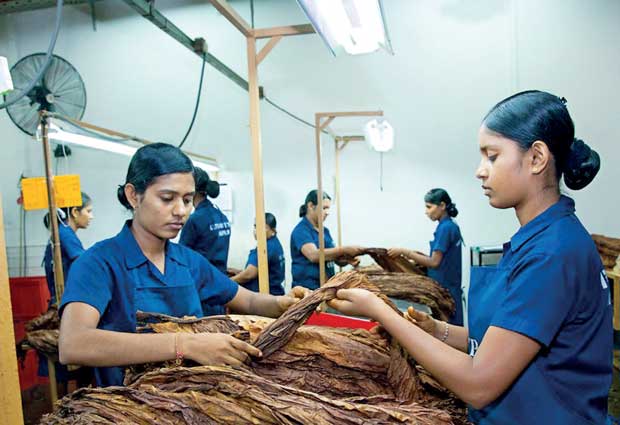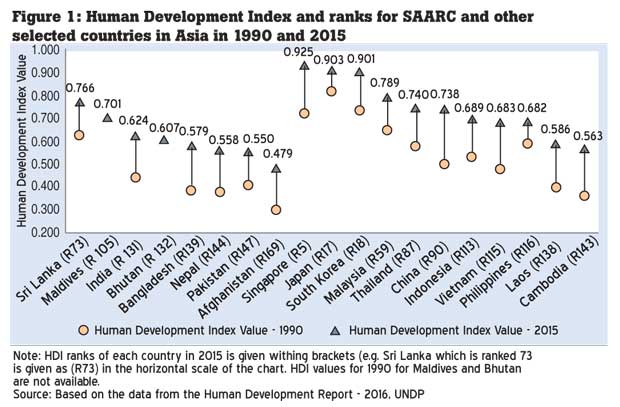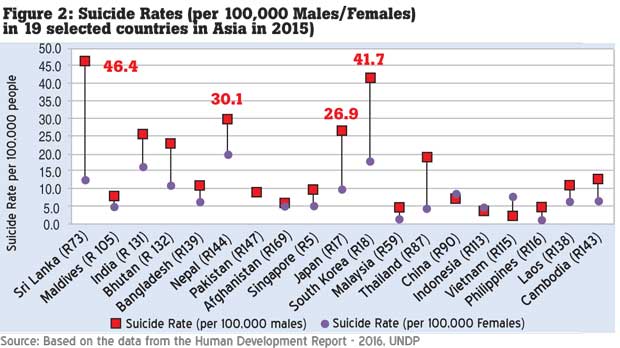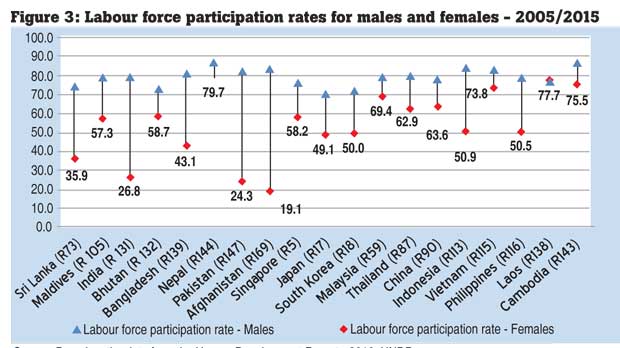05 Jul 2017 - {{hitsCtrl.values.hits}}

 Sri Lanka, though a developing country, has been performing well with regard to human development. Free education and health services, being provided to all citizens and various social welfare programmes to assist the poor, which continued for more than five to six decades, coupled with various development programmes to provide housing, electricity, water and sanitation, efficient communication facilities, etc., have contributed this success. This has helped the Sri Lankan citizens achieve long, healthy lives and impressively high levels of education, which are reaching the levels of
Sri Lanka, though a developing country, has been performing well with regard to human development. Free education and health services, being provided to all citizens and various social welfare programmes to assist the poor, which continued for more than five to six decades, coupled with various development programmes to provide housing, electricity, water and sanitation, efficient communication facilities, etc., have contributed this success. This has helped the Sri Lankan citizens achieve long, healthy lives and impressively high levels of education, which are reaching the levels of
developed countries.
The status of human development in a country is measured using the Human Development Index (HDI), developed by the United Nations Development Programme (UNDP). The HDI is a composite index, which could be used to measure the economic and social development of a country. It consists of three equally weighted components:
(i) ‘Long and healthy life’, measured by expectation of life at birth
(ii) ‘Knowledge’, measured as a combination of adult literacy and gross school enrolment
(iii) ‘A decent standard of living’, measured by GDP per capita
The countries are classified into four levels, based on the value of HDI, which varies from 1 to 0 [(i) Very High Human Development (0.800 and above); (ii) High Human Development (0.700 to 0.799); (iii) Medium Human Development (0.550 to 0.699) and Low Human Development (less than 0.550)].
The aim of this article is to look at where Sri Lanka stands in terms of human development, compared to the countries in the SAARC region and a few selected, developed and developing countries in the Asian region. The article briefly looks at Sri Lanka’s achievements with regard to human development and few of the challenges based on the data provided in the Human Development Report – 2016.

Sri Lanka’s achievements compared to countries in Asian region
Sri Lanka is classified under the ‘High Human Development’ category, with a Human Development Index value of 0.766 and was ranked 73 out of 188 countries in 2015. The Maldives, with a HDI value 0.701 and a rank of 105, is the only other country in the SAARC region, classified under ‘High Human Development’.
India, Bhutan, Bangladesh, Nepal and Pakistan are classified under ‘Middle Human Development’, while Afghanistan is in the ‘Low Human Development’ category. Singapore, Japan, South Korea and Malaysia are the only countries, with an HDI above that of Sri Lanka, out of the 19 selected countries in Asia (Figure 1).
It is interesting to note that Sri Lanka is ranked above a fast developing and powerful country like China, in terms of human development.
The impressive status of human development in Sri Lanka can be attributed to free education and health services that have been available to its citizens for more than six decades. As a result, one of the main components of HDI, ‘Long and Healthy Life’, measured by ‘Expectation Life at Birth’, has now increased to 75 years (78.4 years for females and 71.7 years for males), which is gradually reaching the levels of developed countries.
However, a cause for concern is the more than seven year gap between life expectations at birth of males and females; this needs to come to the attention of health authorities.
Indicators related to ‘Knowledge’ are also impressive. Adult literacy rate was 92.6 percent in 2012; youth (15-25 years) literacy was 99.2 percent for females and 98.4 percent for males and the percentages of population (25 years and above) with at least some secondary education is more than 80 percent for both males and females.

Almost universal gross school enrolment ratios up to age of 14 years is another achievement of Sri Lanka, compared to other Asian countries considered in this analysis. For example, only Japan, Singapore, South Korea and Malaysia are above Sri Lanka in terms of populations (25 years and above) with at least some secondary education (Figure 3).

Challenges
While Sri Lanka can be proud of the achievements in many areas, there are a number of concerns which need to be addressed. However, only the following issues will be discussed in this article.
Male suicides: In the SAARC region and among other selected countries in the Asian region, Sri Lanka ranks first followed by South Korea, Nepal and Japan. Worryingly, out of the 188 countries in the World, Sri Lanka ranked third, in terms of male suicides. The two countries above Sri Lanka are Guyana (70.8 per 100,000 males) and Lithuania (51.0 per 100,000 males).
Data on suicides in Sri Lanka show that nearly 6,000 people are committing suicide each year and around 75 percent of them are males. A special study may need to be conducted, covering those who have attempted suicide, to ascertain the causes for this high incidence of male suicides in Sri Lanka. The Health Ministry, Nutrition and Indigenous Medicine and Ministry of Social Empowerment, Welfare and Kandyan Heritage may have to consider improving easily accessible counselling services for troubled persons.
Female labour force participation in Sri Lanka: As already explained, most of the indicators related to ‘Knowledge’ show that females have performed better in terms of education when compared to their male counterparts. The statistics also show that in Sri Lanka, there are more girls than boys in Advanced Level classes and universities.
Even with these achievements, the labour force participation rate (LFPR) of females remains extremely low (35.9 percent in 2015), compared to most of the countries in the Asian region (Figure 3). Except in three countries [Afghanistan (19.1 percent), Pakistan (24.3 percent) and India (26.8 percent)], out of the 19 countries in the Asian region considered in this analysis, in all other countries, female LFPR is much higher than in Sri Lanka. In the three countries mentioned above, the level of education is much lower comparative to Sri Lanka.
One of the reasons for low female LFPR in Sri Lanka, despite high levels of education, is the unavailability of decent employment opportunities, in close proximity to their hometowns. Availability suitable employment opportunities, in their hometowns, will make it easier for them to balance their child-care and household responsibilities with work (MDG Country Report 2014).
Flexible working hours and/or facilitating working from home in certain type of jobs (e.g. information technology-related jobs), may also help in increasing the female LFPR. This will also help in increasing their family incomes and therefore raise the living standards of such families. This will also help to reduce the persisting income inequality to a certain extent.
Female representation in parliament: Another concern is very low female representation in parliament in Sri Lanka, which is only 4.9 percent and is the lowest in the SAARC region and one of the lowest in the world. In the SAARC region, female representation in parliament is highest in Nepal (29.5 percent), followed by Afghanistan (27.4 percent), Bangladesh (20.0 percent) and Pakistan (20.0 percent).
Sustainable Development Goal (SDG) Target 5.5 is to” ensure women’s full and effective participation and equal opportunities for leadership at all levels of decision-making in political and public life”. Sri Lanka will never achieve this target by 2030, with such low female representation in parliament.
More educated females will have to be encouraged to actively participate in politics so that they could get involved in the decision-making process at the highest level and to make their contributions to the development of this country, to make it a better place for everyone live.
It should also be their responsibility to make a voice for thousands of voiceless women and children in Sri Lanka, who are facing various difficulties.
(Wimal Nanayakkara is a Senior Visiting Fellow at the Institute of Policy Studies of Sri Lanka (IPS). To view this article online and to share your comments, visit the IPS Blog ‘Talking Economics’ - http://www.ips.lk/talkingeconomics/)
07 Jan 2025 7 hours ago
07 Jan 2025 7 hours ago
07 Jan 2025 8 hours ago
07 Jan 2025 07 Jan 2025
07 Jan 2025 07 Jan 2025